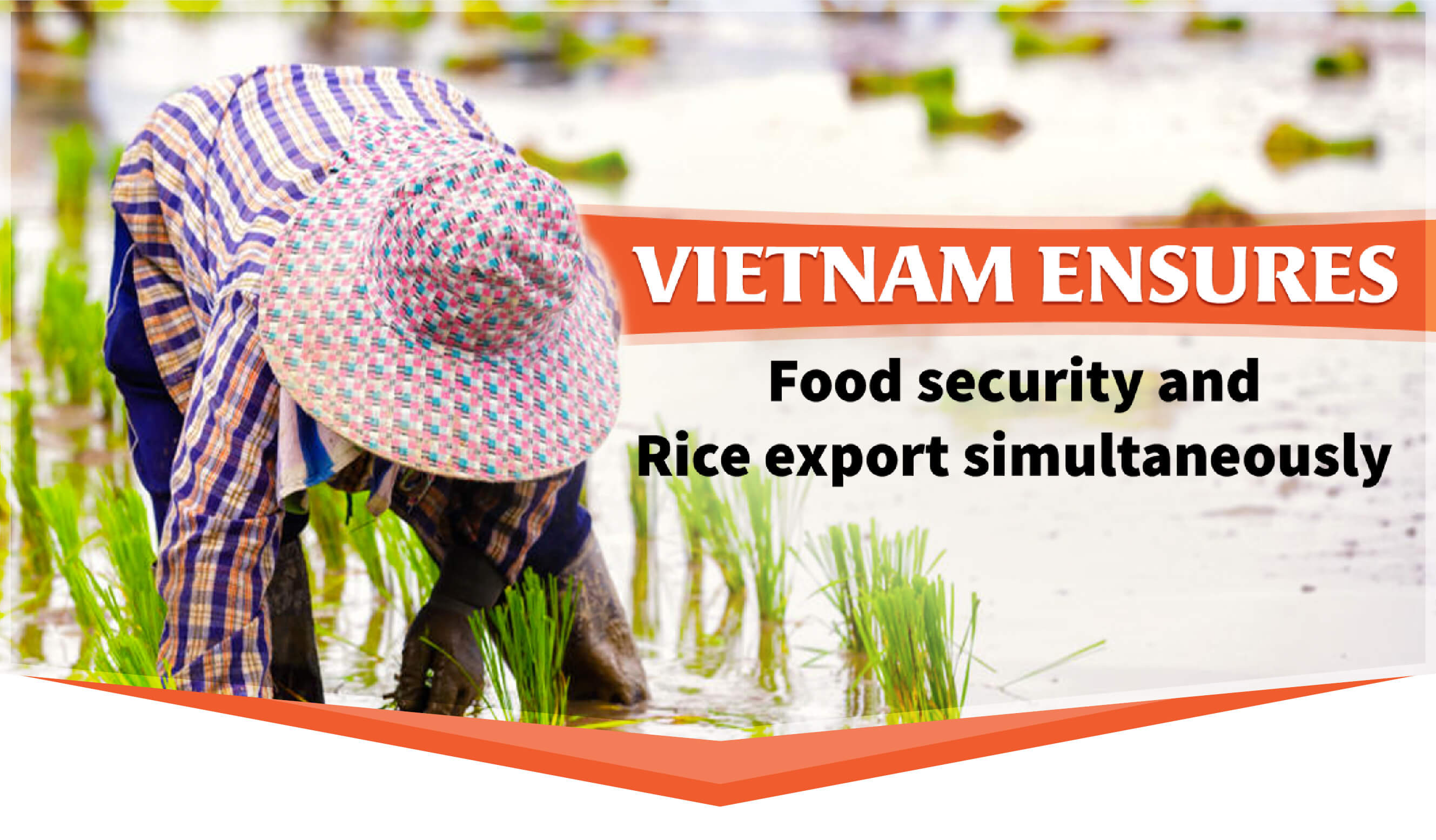

Facing the complicated development of the COVID-19, some countries, including Vietnam, are taking measures to ensure domestic food supply during the COVID-19 outbreak.
Accordingly, countries that have the potential to export food such as Kazakhstan have decided to ban the export of wheat along with a number of other agricultural products such as carrots, sugar, and potatoes. Serbia has stopped exporting sunflower oil and other products. Most recently, Cambodian Prime Minister Hun Sen also ordered to suspend rice and rice exports to foreign countries, to ensure domestic demand amid the pandemic.

In other developments, many countries are seeking to fill up strategic reserves. It can be said that China has committed to increasing the purchase of rice and wheat reserves for a year. Other key importers of wheat, such as Algeria and Turkey, also announced new purchases, while Morocco opted for a free-duty wheat import until mid-June.
Vietnam, one of the world’s leading rice exporters, after balancing the domestic supply – demand and inventory, the Ministry of Industry and Trade has proposed the Prime Minister to suspend rice export from March 24 to ensure food security. This immediately came in for mixed opinion from the public, forcing the Ministry of Industry and Trade on March 24 to send a speeding petition to the Prime Minister for permission to continue exporting rice to re-evaluate the supply and made a decision accordingly.


The story of export, export ban, and the proposed suspension of the export ban occurred within 1 – 2 days, causing people are worried about rice shortages due to prolonged outbreak, and farmers, enterprises and banks are on a “knife-edge” because they do not know whether they can sell, export rice and if the banks can collect? So, what is the story behind this?

As for rice producers, export enterprises and agricultural experts find that “Vietnam is fully capable of providing rice to 100 million people and exporting 6 – 7 million tons of rice per year”. According to the statistics of the agricultural sector, each year, Vietnam produces 40 – 43 million tons of rice crops, or more than 20 million tons of rice. In the Winter – Spring crop this year, despite the saline intrusion in the Mekong Delta provinces, the impact from the drought is insignificant so the rice is still good thanks to the previous preparation.
Regarding inventory, the Vietnam Food Association and traders reported at the meeting on March 26 to the inter-industry inspection team chaired by the Ministry of Industry and Trade, the total inventory reached 1,574,139 tons of rice of all kinds. In particular, the total rice inventory among members is 1,507,363 tons while the amount of rice in the non-members’ inventory is 66,776 tons.
Mr. Do Ha Nam, Vice President of Vietnam Food Association (VFA) analyzed: Currently, only export rice with good price at about 475 USD ton is beneficial for both farmers and enterprises. Other agricultural products are exported very slowly because of diseases and border restriction policies. Accordingly, Mr. Nam said that Vietnam should still export rice after storing the necessary amount of food.


According to Professor Vo Tong Xuan, in the recent Winter – Spring crop, Vietnam produced about 5.5 million tons of rice. Meanwhile, only about 1.5 million tons is enough to supply the domestic market in the next 3 months. That means Vietnam still has a surplus of about 4 million tons for export. Not to mention, there are only two months left for the Summer – Autumn rice crop to be harvested. The estimated production in this crop is over 5 million tons, and if using 3 million tons to reserve until the end of the year, there is still about 2 million tons left to export.

Based on the proposals and calculations of enterprises, the inter-industry inspection under the direction of the Prime Minister, the Ministry of Industry and Trade has recently proposed to continue to export rice but the export must be strictly controlled by the monthly amount. In the near future, April and May 2020 will see the export of about 800,000 tons, down 40% compared to the same period in 2019.
In the Government’s Standing Committee meeting on the afternoon of March 31, Prime Minister Nguyen Xuan Phuc directed the Ministry of Industry and Trade to obtain an official document with the opinions of a number of ministries such as Ministry of Agriculture and Rural Development and Ministry of Finance… to report the Prime Minister on rice export before April 5, 2020. The Prime Minister emphasized on ensuring abundant food for 100 million people, ensuring reserves and performing other tasks, such as supporting rice for afforestation and supporting students in mountainous areas…

In special circumstances of the country, the food security issue has long been assumed to be merely rice, while food does not consist solely of rice but also includes other food plants and must be viewed from a nutritional perspective. This is what the Ministry of Industry and Trade is supposed to know and spread transparent and accurate information to the public and take initiative in planning to report to the Government. Ensuring food security is a top socio-political goal, but it also has to ensure economic and livelihood goals for farmers. “It is impossible for farmers as frontline soldiers to ensure food security but always have to suffer”, said Dr. Tran Huu Hiep, Agricultural Specialist of Mekong Delta Region.










Comment